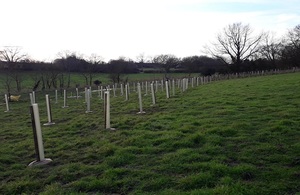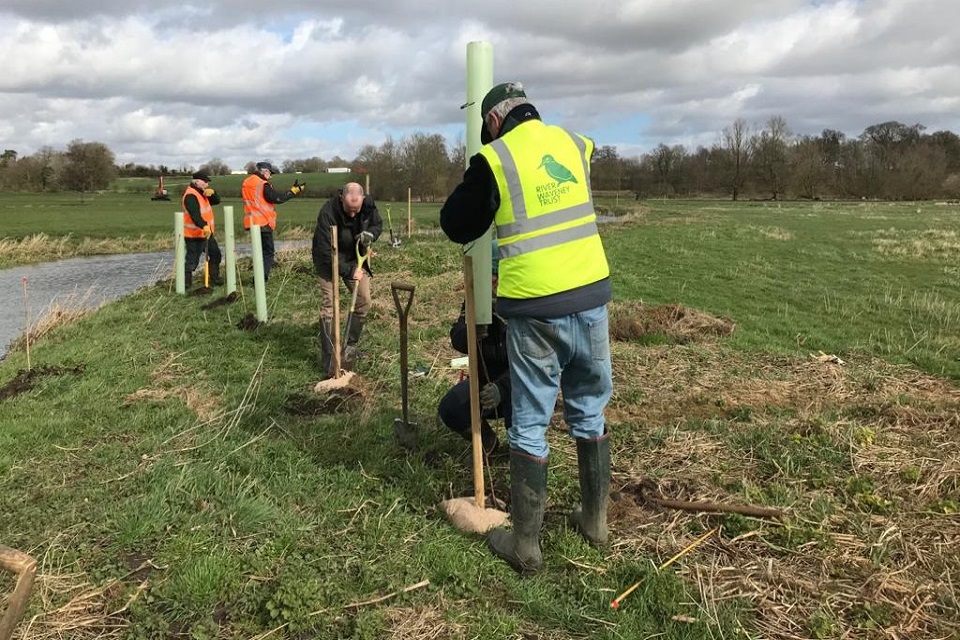More than 1,000 trees to be planted in Suffolk
The Environment Agency has planted over 600 trees in Suffolk so far this year with hundreds more planned this winter.

Trees planted at Ubbeston.
The winter months, from November to March, is the best time to plant bare root trees as the ground is generally damp. This gives them time for their roots to settle and become established before they come into growth in the spring.
290 trees, including some rare native black poplar, will be planted at various locations alongside the River Waveney downstream of Diss and along the River Dove.
The black poplar is 1 of the UK’s rarest trees, there are thought to be less than 8,000 in Britain, with around 430 in Suffolk. The rare tree has great wildlife value especially for insects, it also provides nesting sites for owls and roosts for bats.
So far the Environment Agency has planted 634 trees in Suffolk in 2021. 349 of these trees were planted along the River Gipping, 254 are in and around Stowmarket and Needham Market and 95 are in Ipswich. 200 trees were planted with Suffolk Wildlife Trust next to the Walpole River at Ubbeston.

Tree planting with River Waveney Trust.
Over 500 trees are scheduled to be planted between now and March 2022 with the River Waveney Trust and Essex and Suffolk Rivers Trust. 343 trees will be planted along the River Alde, River Deben and the Earl Soham watercourse.
Naomi Boyle, Catchment Co-ordinator for Suffolk said:
It has been a pleasure to work with landowners and partners to plant trees alongside our Suffolk rivers.
This planting will help our rivers to adapt to climate change. In time, they will not only provide shade to keep fish and invertebrate populations cool but the tree roots will help stabilise the river banks.
This will result in less sediment entering the water, which will help improve water quality.
Additional information
-
From March 2021 to March 2022 1,151 trees will have been planted in Suffolk.
-
Black poplar can grow to 30 metres and be identified by their leaning trunks. It is associated with wet meadows, river valleys, streams, ditches and farm ponds. For the tree to regenerate naturally male and female trees must grow fairly close together, and fertilized seed must fall on bare mud or silt which must remain moist until autumn for the seedling to establish. This habitat has become very rare due to floodplains being drained for agriculture or development and so now the tree is usually regenerated from cuttings.
-
Picture credit: The Environment Agency